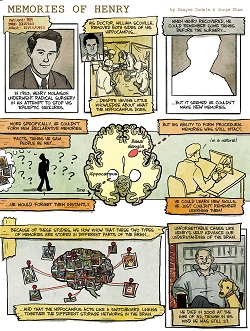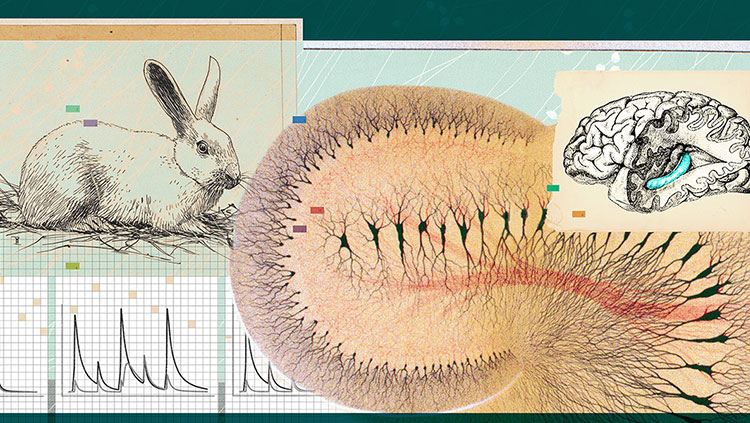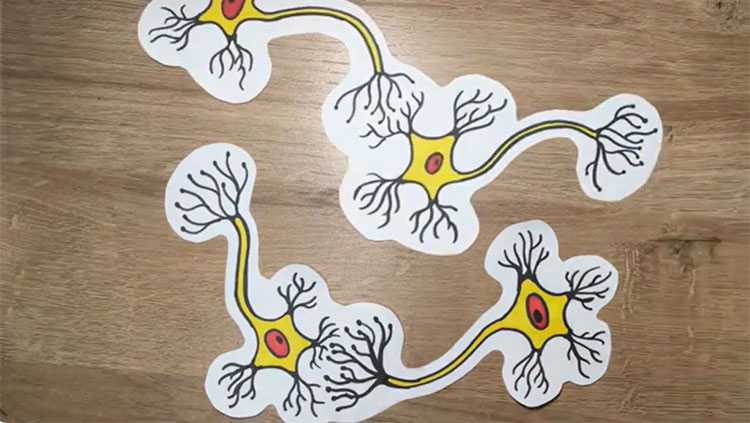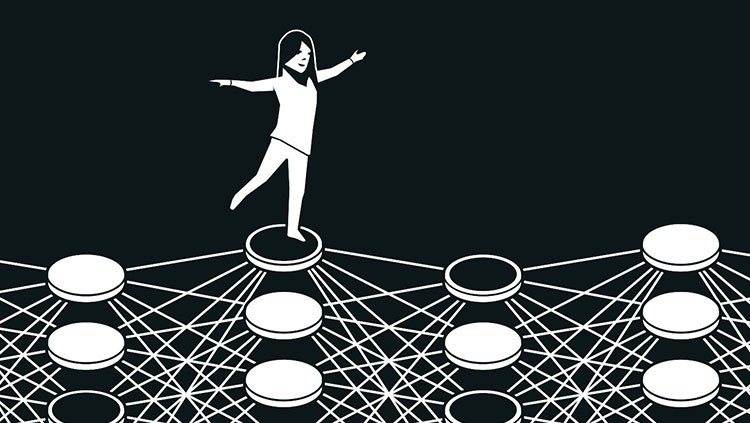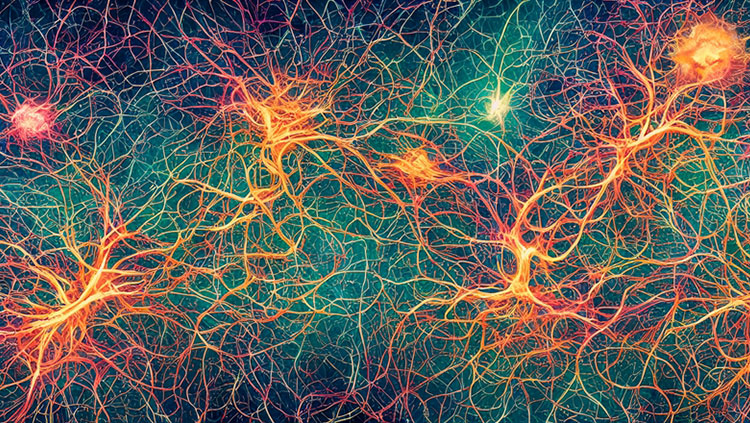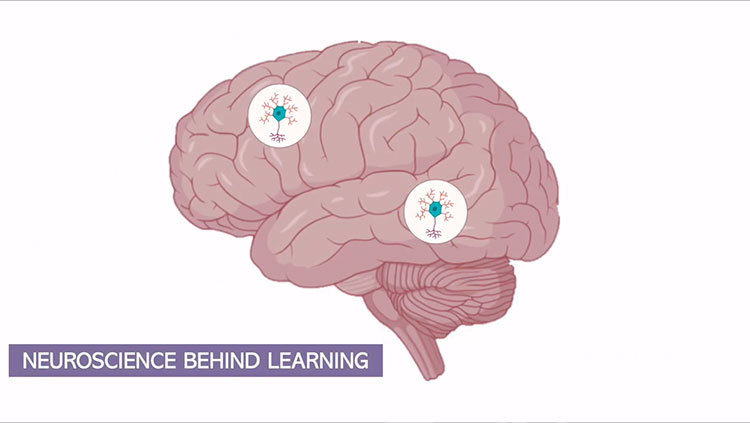Patient Zero: What We Learned from H.M.
- Published16 May 2013
- Author Dwayne Godwin
- Source BrainFacts/SfN
Memory is our most prized human treasure. It defines our sense of self, and our ability to navigate the world. It defines our relationships with others – for good or ill – and is so important to survival that our gilled ancestors bear the secret of memory etched in their DNA. If you asked someone over 50 to name the things they most fear about getting older, losing one’s memory would be near the top of that list. There is so much worry over Alzheimer’s disease, the memory thief, that it is easy to forget that our modern understanding of memory is still quite young, less than one, very special lifespan.
Meet the Patient Zero of memory disorders, H.M.
H.M. was the pseudonym of Henry Molaison, a man who was destined to change the way we think about the brain. Permanent Present Tense: The Unforgettable Life of the Amnesic Patient H.M. is a touching, comprehensive view of his life through the eyes of a researcher who also, in a sense, became part of his family.
The prologue opens with a conversation between the author, Suzanne Corkin, and Molaison in 1992. It reads a bit like a first meeting of two strangers, but then Corkin reveals a jarring truth: this meeting was one of many similar encounters they’d had over 30 years.
By now, if you’re interested in learning and memory you probably know the basics of Henry Molaison’s story. He had epilepsy from an early age that was thought to be acquired through head trauma from a bike accident (though apparently family members also had epilepsy). His surgeon, William B. Scoville (who in a remarkable twist, was a childhood neighbor of Suzanne Corkin) removed Henry’s hippocampus and amygdala in both hemispheres of his brain, in an attempt to control his seizures.
The results of the surgery are legendary. While Henry’s seizures were controlled, he suffered a type of profound anterograde amnesia that prevented him from encoding new memories, but spared certain details of his life leading up to the surgery. Henry would have no memory of those he worked with from day to day, or of new information he might encounter. The book’s title, “Permanent Present Tense”, describes his zen-like existence within the thirty or so seconds around the present moment, which was the limit of Henry’s short term memory.
If this book were a movie or video game, it would be said to be full of “Easter eggs”. There are vignettes and bits of unexpected information that add rich historical context to the state of knowledge in Molaison’s time. These include a digression on the history of neurosurgery, including the gruesome history of lobotomies and the advances brought to the field of neurosurgery by Wilder Penfield. In many ways, H.M.’s legend is a product of a unique scientific lineage – Scoville owed much to Penfield, who in turn trained under Charles Sherrington (he who gave “synapse” to the neuroscience lexicon), and Brenda Milner, who trained under Donald Hebb (who spawned our current notion of activity-dependent plasticity, embodied by the phrase, “cells that fire together wire together”).
The book also reminds us that H.M. was not the first amnesic patient produced through neurosurgical interventions to treat intractable epilepsy, but he was by far the most studied. The book conveys a sense of wonder at the accomplishments of scientists and physicians, charting terra incognita with scalpels, electrical probes and psychological test batteries.
Corkin recounts Henry Molaison’s early life, including key events - like a childhood plane ride that Henry remembered after his surgery - with gentle but thorough prose. Some of these details come from personal conversations with Henry, while others are the result of careful reporting and research.
The book is an accessible master class in learning and memory, with details and key milestones culled from Corkin’s decades of experience as a memory researcher. The details are not so burdensome as to be esoteric, nor so simple as to be trivial. The book gives only a brief overview of the growing field of knowledge about the cellular mechanisms supporting learning and memory (which might be lost on a casual reader), but this is wisely offset by the details of functional anatomy gleaned from Henry and other patients, and a solid explanation of how we encode, store and retrieve memories.
A light, scholarly tone is maintained throughout the book, but it occasionally brushes up against the deeply personal. It’s difficult to hear Henry’s story and not wonder (or actually, worry) about how it was to live as Henry lived, trapped in the moment. Corkin is reassuring on this point:
“When we consider how much of the anxiety and pain of daily life stems from attending to our long-term memories and worrying about and planning for the future, we can appreciate why Henry lived much of his life with little stress…in the simplicity of a world bounded by thirty seconds.”[p. 75].
In other words, the very thing that might cause Henry to fret about his condition was missing. Henry’s tragedy, it seems, is in the mind of the beholder. Another interesting passage concerns Henry’s moods – which were usually happy and content, but could occasionally be sad or uneasy. This is interesting given the removal during his surgery of a major part of his emotional processing circuitry of the brain, called the amygdala.
Henry Molaison’s anterograde amnesia was practically absolute. However, something not often noted is that he would occasionally surprise those studying him by recalling something he should not be able to remember - for example, colored pictures, or details of celebrities he had heard about after his surgery. Corkin reasons that a bit of spared medial temporal lobe may explain these moments.
Henry was amnesic, but he was not without memory. Through careful behavioral testing, various types of memory function could be uncovered, including recognition memory for having seen images that could persist for months. Corkin suggests that this “memory for the familiar” may have been of some comfort as he navigated what would have otherwise been a confusing experience of reality. New technologies like computers, for example, could be incorporated into his view of the world and did not appear to be jarring to him as would be expected if his capacity for recognizing the familiar did not exist.
Another key discovery from Henry was the finding that he had retained the ability to form non-declarative memories, which took the form of improvement in motor skills. This separate memory system depended on regions of the basal ganglia and motor cortex, which were spared in Henry’s surgery. Testing could improve his performance in the motor task, but his impaired declarative memory system didn’t allow him to remember taking the tests – he could be surprised by his own improvement. Along with his simple recognition memory, motor memory helped smooth challenges Henry faced as he aged, such as learning to use a walker.
Other forms of memory in which Henry showed improvement were in picture completion, where he was able to identify a picture from fragments over a series of sessions, and priming, where previously presented words could prime recognition on presenting fragments of the words. And while Henry is best known for anterograde amnesia, and is sometimes portrayed as having intact memories of things and events before the surgery, he also possessed a partial retrograde amnesia, especially for autobiographical events that happened two years before the surgery - he had only fragmented memories from before that two year window.
Did Henry Molaison have a sense of self? While his was not a fully integrated personality, he possessed “beliefs, desires and values” and seemed capable of a full set of emotions – even without his amygdalae. His view of his own appearance did not seem to cause him distress, even though his estimate of his own age could vary widely. His impairment prevented him from formulating future plans. His basic decency shines through the narrative.
Henry died in 2008 at the age of 82. His brain was scanned postmortem, and extracted for further anatomical analysis. Coming full circle from one of his remaining childhood memories of his first ride, Corkin describes her last wistful goodbye to Henry’s brain as it was conveyed by his final plane ride back to the west coast, where his brain was sliced up into thin sections for new studies. Perhaps the most documented and studied research subject in neuroscience continues to provide vast amounts of data to further our knowledge.
Henry once remarked about his testing, of which he never seemed to become bored since he carried little from one session to the next: “It’s a funny thing – you just live and learn.” He then went on to provide a poignant turn in the familiar phrase: “I’m living, and you’re learning.”
Though he’s no longer living, we’re still learning from Henry.
Permanent Present Tense is a rare look at an amazing mind, whose study formed the basis of our modern science of memory.
Notes
Corkin, Suzanne. Permanent Present Tense: The Unforgettable Life of the Amnesic Patient, H.M. (Basic Books) May 14, 2013 | ISBN-10: 0465031595 | ISBN-13: 978-0465031597
Update 6/7/2013: NPR interview with Suzanne Corkin on H.M.
Update 1/30/2014: Report on anatomical and histological findings from Henry Molaison: Postmortem examination of patient H.M.’s brain based on histological sectioning and digital 3D reconstruction. J Annese, NM Schenker-Ahmed, H Bartsch, P Maechler, C Sheh, N Thomas, J Kayano, A Ghatan, N Bresler, MP Frosch, R Klaming & S Corkin. Nature Communications 5, Article number: 3122
Update 7/6/2016: Statement on informed consent transmitted to me by Suzanne Corkin
CONTENT PROVIDED BY
BrainFacts/SfN
Also In Learning & Memory
Trending
Popular articles on BrainFacts.org


